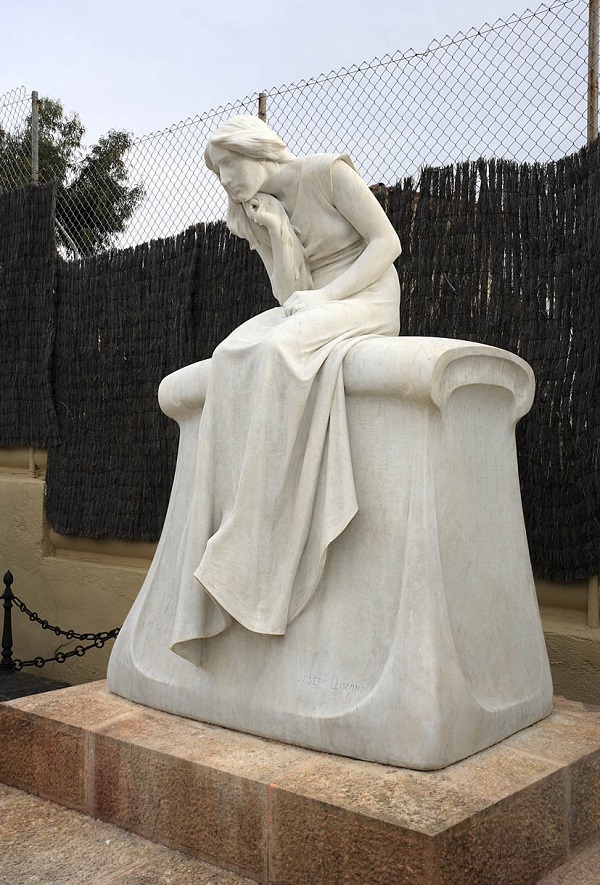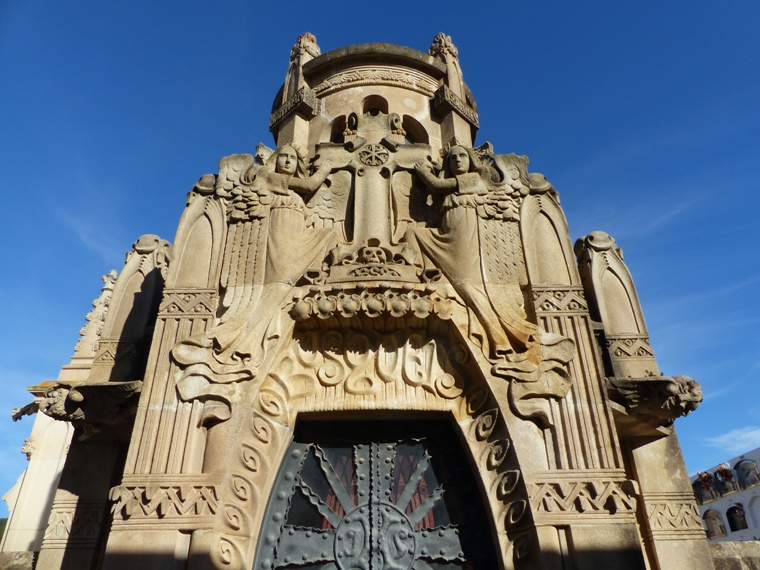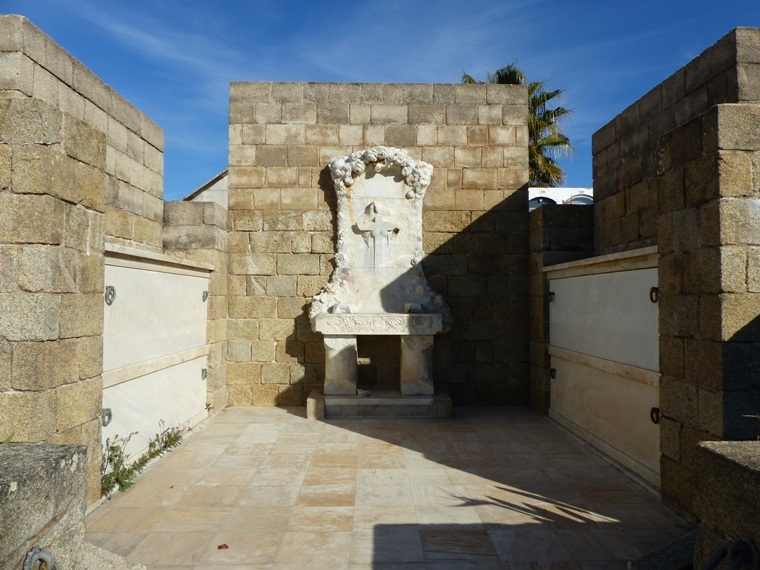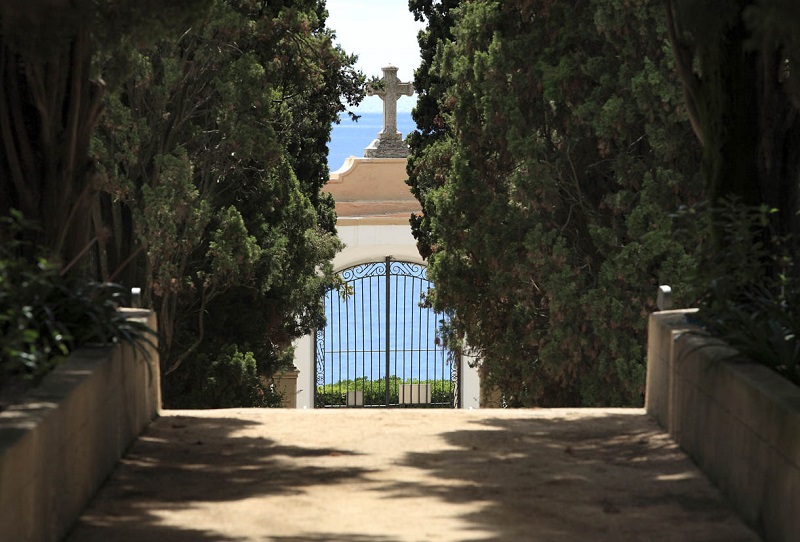There are different types of tourism as the beach or mountain tourism, sports or relax tourism, thermal or gastronomic tourism, family or adventure tourism, cultural or archaeological… Any type that we can imagine, whatever, we have it in Maresme , located next to Barcelona. And also in Maresme we can also discovered the cemeteries tourism. Especially in two very special cemeteries, Arenys de Mar and Canet de Mar.
Arenys de Mar cemetery
In Arenys de Mar, overlooking the sea, stands the most literary cemetery in Catalonia. Not only is the poet Salvador Espriu buried here, but he also stars in one of his most emblematic works “Cementiri de Sinera” (Sinera is Arenys backwards). In this work, the poet refers to the cemetery with beautiful verses “Passejaré per l’ordre de verds xiprers immòbils damunt la mar en calm”.
The poet is buried in niche number 381, at the end of the second landing on the left. You can reach it through the cemetery path, lined with cypresses that rise towards the sky. Once we reach the top of the hill we have within our reach some beautiful views of the town and other nearby places around Arenys de Mar.

The Arenys de Mar cemetery was inaugurated in 1868 together with the Pietat hermitage. It is divided into three large landings crossed by the path of the cypresses. The first two landings are surrounded by niches and on the third there are pantheons built by wealthy people from the town such as industrialists or “Americans”. In this space we can enjoy sculptures by authors such as Josep Llimona, Frederic Marés or Venanci Vallmitjana.
Canet de Mar cementry
In the period of greatest splendor of the modernist style, at the end of the 19th century and beginning of the 20th, Canet de Mar was a rural, industrial and fishing town. The industrialists and large rural owners built numerous houses, many of them following the prevailing modernist style. Naturally, a good number of these owners had a family pantheon built in the cemetery
Like the one in Arenys de Mar, the Canet de Mar cemetery is Mediterranean in style. In addition to the niches there are some very sumptuous pantheons of great architectural quality. These pantheons attest to the wealth of those who had them built. Architects, sculptors and craftsmen such as Lluís Domènech i Montaner (Domenech pantheon), Eduard Ferrés i Puig (Buskets pantheon), and Josep Llimona i Bruguera (Domenech pantheon) worked on them. Some of the sculptures are a very good example of the high level of Catalan modernist sculpture.
Most of the pantheons were built between 1900 and 1910, although some, such as the pantheon of the Santinyà family, date from 1927, outside the modernist period, and were designed by Josep Viladomat.
Other panteones

Busquets Pantheon. Surely the most impressive in the cemetery thanks to its monumentality, it was designed by the architect Eudard Ferrés i Puig.
Magdalena Casals i Roura Pantheon. It is a mix of styles with a façade topped by a pediment and flanked by two pinnacles with a central statue representing faith. The drains are made through gargoyles with monster figures.

Domènech i Montaner Pantheon. Very simple pantheon in which the figure of a Christ showing the cross can be intuited. The original work of this sculpture was by Josep Llimona and was partially destroyed during the War. When he died during the dictatorship of General Primo de Rivera, Lluís Domènech i Muntaner was not buried there, although his name appears on the tomb. The architect’s ashes rest in the Sant Gervasi cemetery in Barcelona. In the pantheon there are the tombstones of his wife, Maria Roura, and of their son, Ricard.
Font Pantheon. Pantheon designed by Lluís Domènech i Montaner with the collaboration of his son Pere Domènech i Roura. It is a luxurious and sober pantheon at the same time, basically built with natural stone with ceramic ornaments and stained glass.
Domingo Pascual Pantheon. Initially it was the tomb of the modernist forger Domingo Pascual, made by himself. Pascual worked for modernist architects such as Doménech i Muntaner and Gaudí, so it is believed that the latter was involved in the design of the railing. The wrought iron works in this pantheon are of high quality.
Pau Font Pantheon. Important pantheon owned by a family of ship captains. It is a large square building built of stone, with numerous wrought iron details such as the bars on the windows or the ornaments on the upper part. The building is crowned by a great angel of the last judgment, the work of the sculptor Pagès Serratosa.
¿Are you looking for a luxury house in Barcelona area?
At BestMaresme we have a great offer in the most exclusive areas of the Maresme. We are experts in luxury properties in towns such as Cabrils, Premia de Dalt, Vilassar de Dalt or Llavaneres. Are you looking for a luxury house to buy or rent in the Costa de Barcelona? Visit us or contact us.

